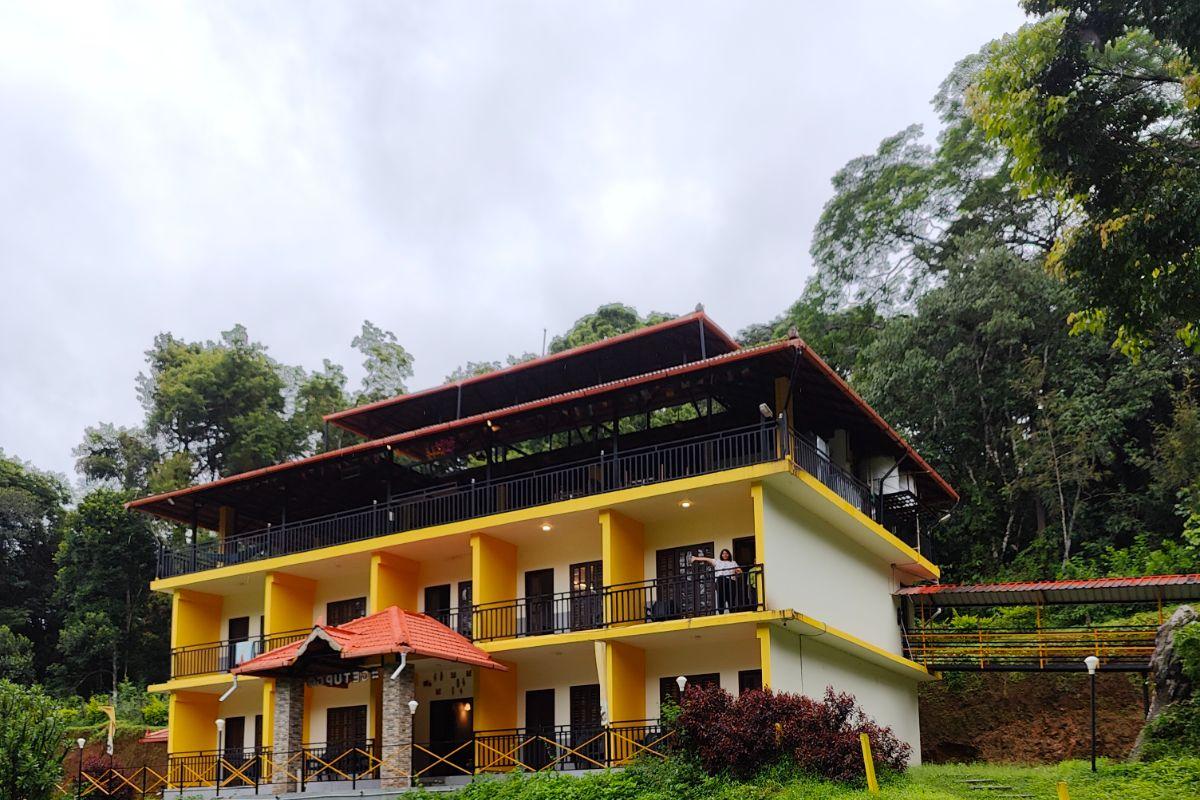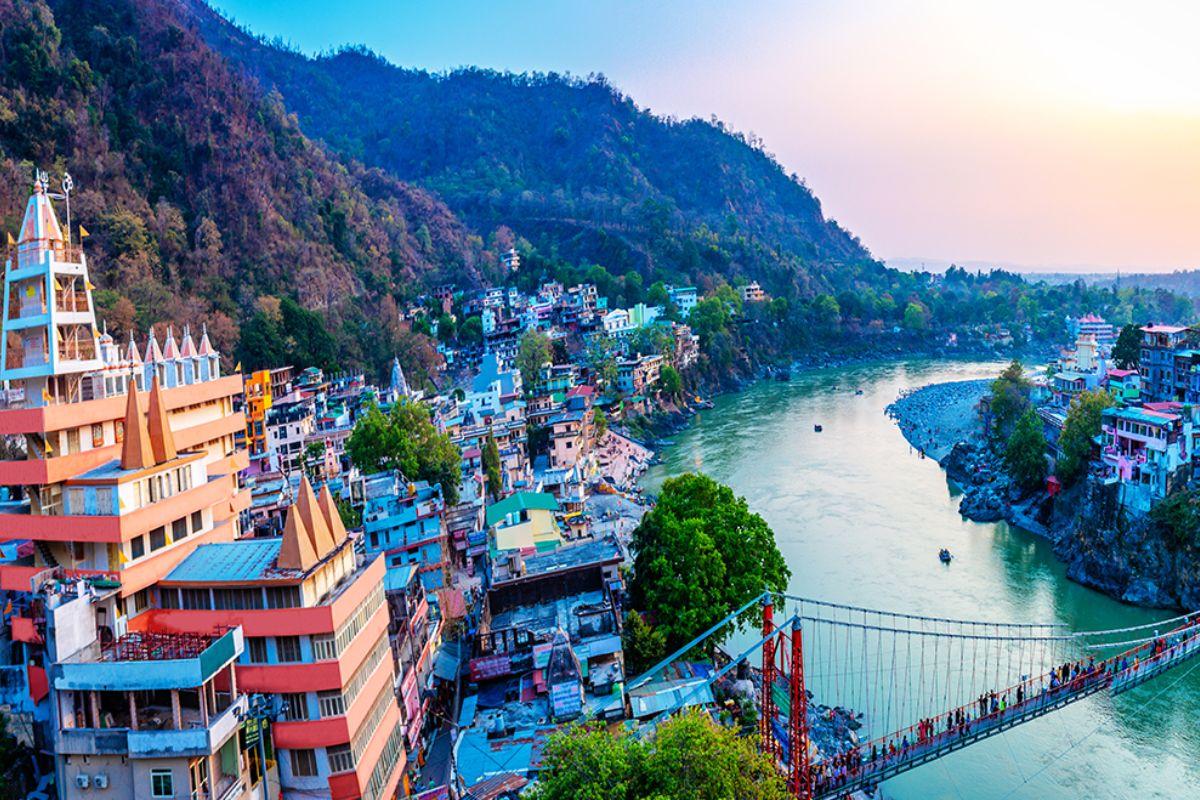10 National parks to visit in the monsoon season

By The Hosteller
25 Jun, 2024
India, a country with diverse landforms and habitats, offers several opportunities for lovers of wildlife. The wet season extends from June to September, when the whole place glitters in green, making it possible for both flora and fauna to revive. This particular period is significant to those who have an interest in watching wildlife because they can see them in action.
Here are ten incredible destinations to experience wildlife during the monsoon in India.
1. Periyar National Park, Kerala
Located in the Western Ghats, Periyar National Park within Kerala provides good conditions for wildlife during monsoons. It is spread across an area of 925 sq. km. and is known for its rich biodiversity and natural beauty. The park has a lake at its core called ‘Periyar Lake’ that enhances its beauty as well as providing an excellent site for viewing animals.
Wildlife highlights
The park contains various species, such as Asian elephants, Bengal tigers, Indian bison, and sambar deer, as well as different types of birds. The rainy seasons make the forest come alive, with animals seen mostly close to water bodies.
Things to do
Guided treks, bamboo rafting, or boat safaris on Periyar Lake are some of the activities that visitors can enjoy while in this park at that time. Additionally, there are forest guards patrolling the jungle at night, thus ensuring security just like the police.
Periyar National Park(Credits: Canva)
2. Kaziranga National Park, Assam
Kaziranga National Park, located in Assam, is one of UNESCO’s World Heritage Sites, famously known for its one-horned Indian rhinoceros population. Monsoon rains provide the opportunity while visiting there if you want to see that place when it’s all green up.
Wildlife highlights
Besides the one-horn rhino presence in Kaziranga, elephants are present too, among others like wild water buffalo and swamp deer, as well as many bird species, which makes it an invaluable conservation area considering these endangered species.
Things to do
A jeep safari and elephant rides are the best ways to explore this park. You do not want to miss out on a visit to Kaziranga National Orchid Park, which is situated in its surroundings, if you are interested in plants.
Kaziranga National Park(Credits: Canva)
3. Bandipur National Park, Karnataka
Monsoons turn Bandipur National Park into a sanctuary for wildlife lovers who come and witness the animals that live there as well. It has an area of 874 square kilometers and is part of the Nilgiri Biosphere Reserve, with abundant fauna and flora.
Wildlife highlights
Some of the notable inhabitants of Bandipur include Bengal tigers, Indian elephants, leopards, and various species of deer. The park also houses a large number of birds, making it a haven for birdwatchers.
Things to do
The park is accessible through jeep safaris and guided nature walks. There is also the Himavad Gopalaswamy Betta within the boundaries of Bandipur National Park, which can be climbed to see miles away from its peak on treks.
Bandipur National Park(Credits: Canva)
4. Tadoba Andhari Tiger Reserve, Maharashtra
Tadoba Andhari Tiger Reserve sits in Maharashtra State, one of the oldest and biggest parks found within India, where tigers thrive mostly during monsoons. It remains green throughout these months because it receives enough rainfall.
Wildlife highlights
The reserve has a high population of Bengal tigers; leopards also reside there, along with sloth bears, Indian bison, and even many other types of deer. The other set includes reptiles, while avian life is so rich here too, like in any other forest that preserves such things.
Things to do
One way to navigate through this place is by using Jeeps only. Tadoba Lake and the Andhari River flowing through the park provide excellent opportunities for watching wildlife and taking pictures of it in close quarters.
Tadoba Andhari Tiger Reserve(Credits: Canva)
5. Silent Valley National Park, Kerala
Situated in the Nilgiri Hills of Kerala, Silent Valley National Park is famous for its beauty and special types of life. It is a place whose monsoon season makes it attractive to those who are interested in wildlife.
Wildlife highlights
The park is home to several rare and endangered species, such as the lion-tailed macaque, the Nilgiri tahr, and the Malabar giant squirrel. It also has a rich avian population with several endemic bird species.
Things to do
In Silent Valley, guided treks and nature walks are very popular. The park also offers opportunities for bird watching and exploring the diverse flora.
Silent Valley National Park(Credits: Canva)
6. Jim Corbett National Park, Uttarakhand
Jim Corbett National Park in Uttarakhand is not only India’s oldest national park but also a famous tiger reserve. During the rainy season, it sees an influx of tourists due to its varied landscape and rich wildlife.
Wildlife highlights
Corbett has Bengal tigers, elephants, leopards, and various deer species, among others, as some of its main attractions. The park houses different species of birds, including migratory ones, thus being a sanctuary for bird watchers.
Things to do
A person can explore only by doing jeep safari or elephant rides in this park. In particular, tourists frequently spot wildlife in the Dhikala zone within it. Within the park, one may fish on the Ramganga River.
Jim Corbett National Park(Credits: Canva)
7. Ranthambore National Park, Rajasthan
Ranthambore National Park, located in Rajasthan, is one of India’s most visited game parks or reserves. During monsoons, it becomes captivating because of the jagged terrain and rich biodiversity found there.
Wildlife highlights
In fact, Ranthambore harbors Bengal tigers, leopards, sloth bears, and miscellaneous deer genera too, like no other place does so far as my knowledge goes on this subject matter. And in addition to that, the park is a bird watcher’s paradise.
Things to do
Ranthambore can be best explored by Jeep safaris and canter safaris. It also has Ranthambore Fortress, which is of historical importance as it gives an insight into the history of the area and offers a 360-degree view of the surrounding areas.
Ranthambore National Park(Credits: Canva)
8. Sundarbans National Park, West Bengal
Sundarbans National Park is situated in West Bengal and is part of the largest mangrove forest in the world, known for its unique ecosystem that is indeed mesmerizing during monsoons.
Wildlife highlights
For instance, amidst Sunderban’s flora are tiger species belonging to the Bengal variety that have successfully adapted to survive in waterlogged mangrove environments. The park also has estuarine crocodiles, Indian pythons, several bird species, and fish.
Things to do
Visitors will use boats to go around the Sunbdarbans since this is their only means of travel within this region. Bird watching and exploration of this unique ecosystem are other recreational activities available at this site.
Sundarbans National Park(Credits: Canva)
9. Valley of Flowers National Park, Uttarakhand
During the monsoon season, the park transforms into a vibrant carpet of colorful flowers, earning its well-deserved reputation as a UNESCO World Heritage Site. Over 600 species of exotic flowers, including orchids, poppies, primulas, and daisies, paint the meadows in a breathtaking display.
Wildlife highlights
Beyond the floral magic, the park offers a glimpse into the lives of fascinating fauna. Endangered species like the Asiatic black bear, the elusive snow leopard, and the majestic blue sheep roam these mountains. Birdwatchers will delight in spotting the Himalayan monal pheasant and other high-altitude birds.
Things to do
The only way to reach the Valley of Flowers is by trekking; a journey through this park is nothing short of magnificent, with breathtaking sights of Himalayan terrain. Another popular trekking destination is Hemkund Sahib, which lies close by and draws many Sikh pilgrims annually.
Valley of Flowers National Park(Credits: Canva)
10. Manas National Park, Assam
Manas National Park, situated in Assam, is a UNESCO World Heritage Site and Biosphere Reserve. The place harbors an array of wildlife, including several endangered species, along with mesmerizing landscapes, making it ideal during monsoon season.
Wildlife highlights
Endangered Bengal tigers, one-horned Indian rhinoceroses, and pygmy hogs are found within Manas. For instance, it also plays host to many types of birds, which makes it an attractive place for bird watchers.
Things to do
Some visitors opt to take part in jeep safaris or go on elephant rides when they explore Manas. At the same time, there are possibilities like river rafting across the Manas River or exploring traditional tribal villages nearby.
Manas National Park(Credits: Canva)
Stay with The Hosteller while watching the wildlife!
It is thrilling to explore India’s awesome wildlife during the wet season. Any of these locations offers an incredible opportunity to experience the majestic elephants at Periyar National Park or the vibrant flowers in the Valley of Flowers.
You can make it more unforgettable by staying at The Hosteller. These accommodations are comfortable and affordable, and you will find them scattered all over different parts of India.
The Hosteller guarantees you a nice rest after this adventurous trek through the Sundarbans mangroves, Silent Valley woods, or Jim Corbett Safari. Travel cheaply with The Hosteller while enjoying their hostels that look like your home away from home.
Make sure this monsoon does not pass without having had the best wildlife experience ever. Visit The Hosteller for bookings on accommodation, where you’ll have to commence your journey into the Indian wilderness that will be hard to erase from your memory.
thehosteller
Destinations
Destinations







